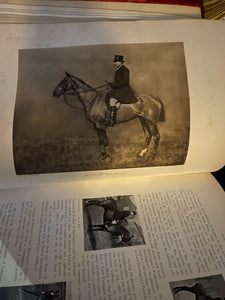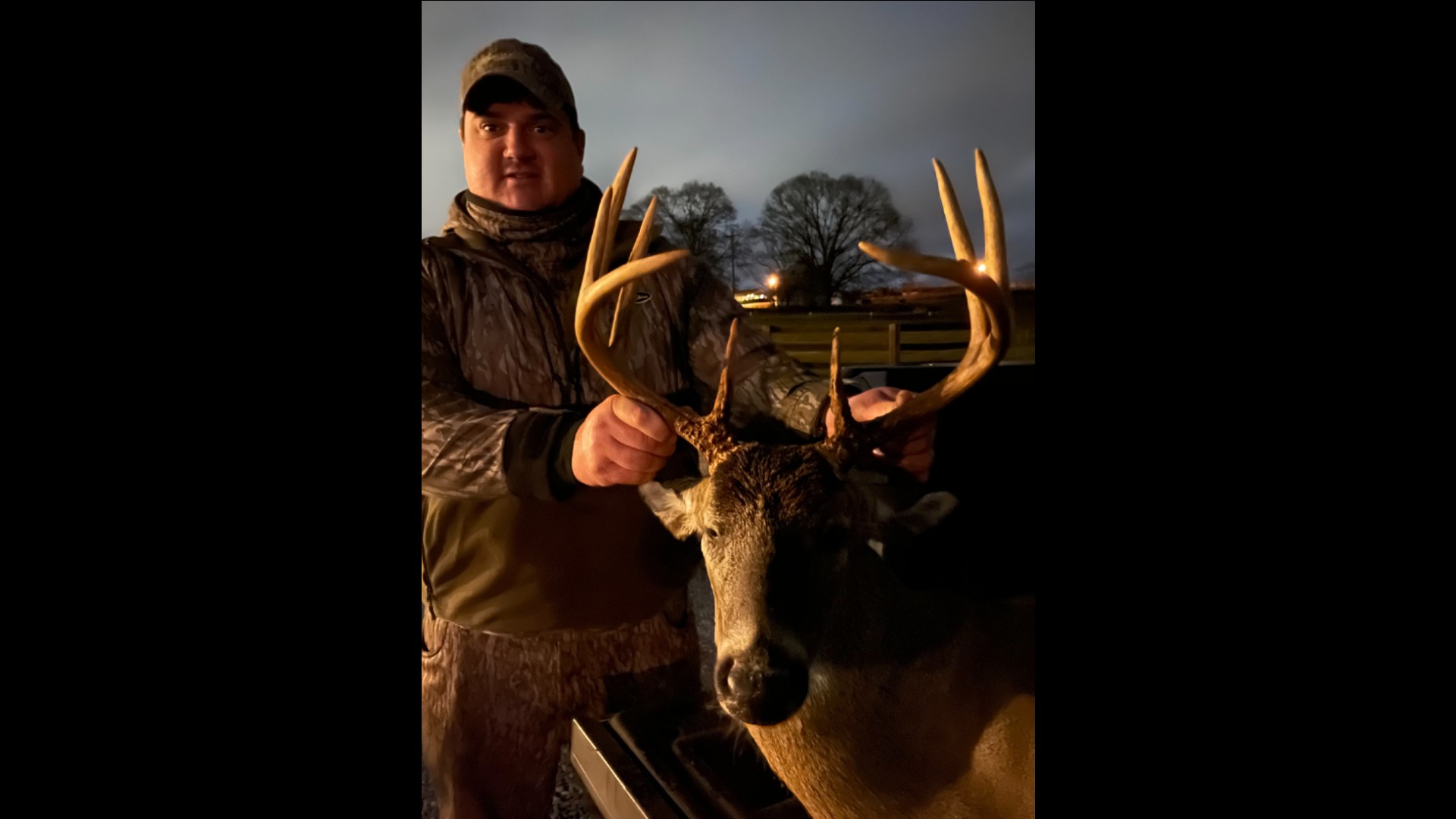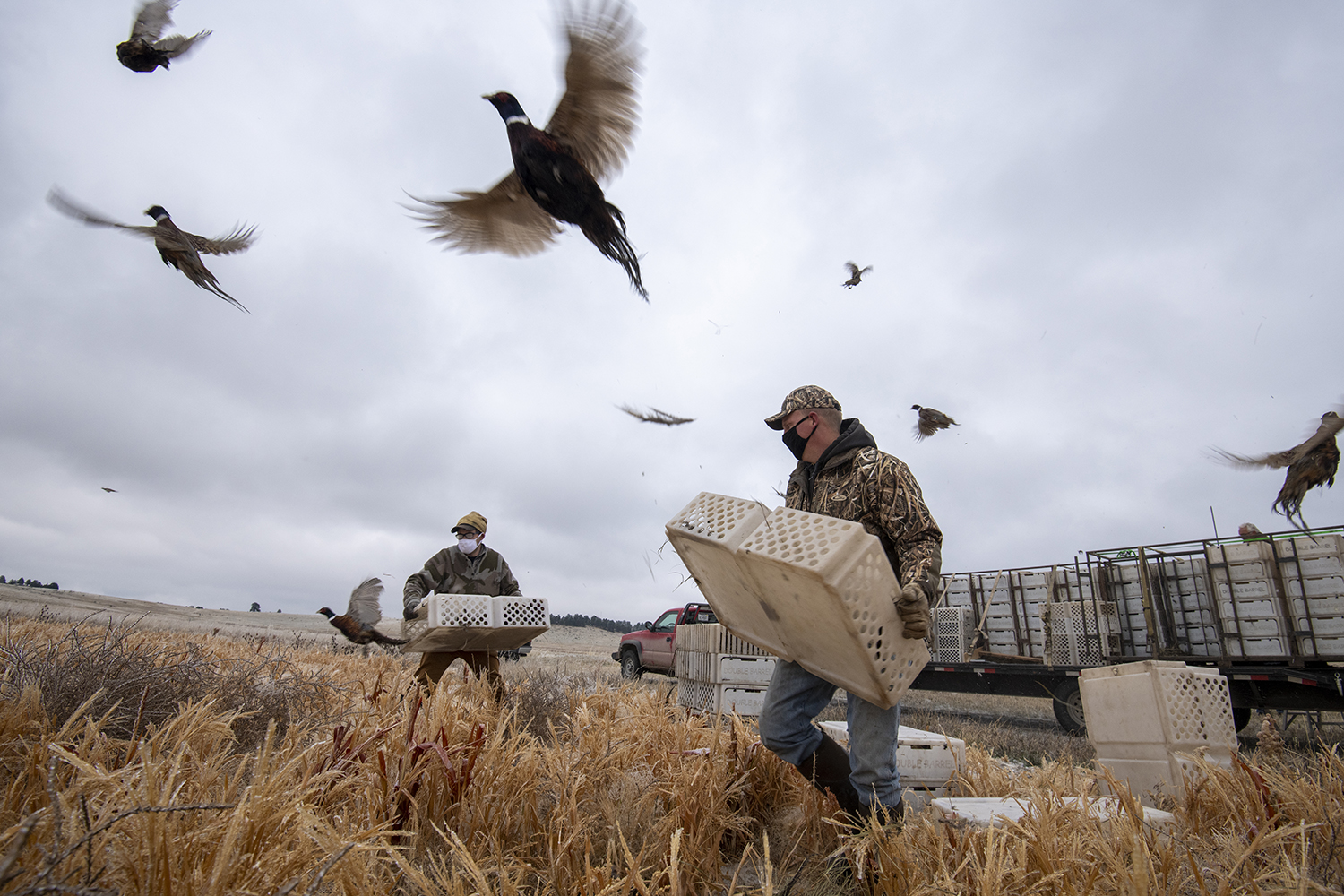
It is not known when the first human hunter began to hunt big game for food. Some believe it originated with Homo sapiens, but other great apes have also hunted and eaten their own species. Researchers discovered Schoningen spears in the early 21st Century, the first evidence of an active hunt. They are the first tangible proof of complex technological abilities 300,000 years old. H. heidelbergensis is the genus that was first to have been able to hunt. This ape displayed cognitive abilities similar to those of modern man, which is not surprising.
The first step in successful big-game hunting is spotting an animal. There are many locations to spot an animal, but most hunters prefer to stay close enough to them to avoid being seen. The best place to kill 90% of your target animal is behind its front legs. Support your rifle on the butt adjacent to your shoulder while you're standing and squeeze the trigger slowly. You can fire another shot if the animal begins or becomes agitated. You can have fun hunting large-game animals after you've learned the art of spotting them.

The vast majority of large herd animals are the targets of big game hunters. These animals are dangerous to humans and often live in secluded locations. The southern United States and Africa are two of the most popular places to hunt big game. Antelopes may weigh up to 1000 kilograms and are considered a full-blooded biggame. The majority of the time, hunting for antelopes takes place on hunting farms, so there are plenty of opportunities to bag a trophy.
It can be difficult and costly to legally hunt big-games. A government-sanctioned hunt in a specific region is the only way to ensure ethical and legal hunting. Big game hunters must be aware of all the possible risks. Some people may find the sacrifices worthwhile. Most people consider big-game hunts a hobby and not a leisure activity. There are many benefits.
Many people consider big-game hunting an essential part their lives. It is also an opportunity to help the environment. Hunting large-game animals has become a common tradition among many people. It's an exciting sport that has positive impacts on wildlife and the natural world. Those who pursue it are making the world a better place for everyone. The economic benefit is enormous, as well as the ethical and social impact. It is important that hunting be enjoyable.

Africa is home to a lot of big game hunting. Contrary to American hunting, African big game hunters can bring their families on safaris. Professional hunters are also welcome to accompany guests. The fees for the trips are high, but tourists must be aware of the risks associated with these trips. A safari is a unique and exciting experience for those who love adventure. This is a wonderful opportunity to learn about African culture, and to hunt wild animals.
FAQ
Where can I buy a gun? What gun do I need?
Certain species require a gun to hunt.
Hunting licenses are required in most states. The type of firearm required depends on which game you want to hunt, and what state you live in.
At any sporting goods retailer, you can purchase a rifle or shotgun, handguns, muzzle loader and crossbow as well as an archery weapon.
You should ensure that you select a weapon that suits your needs. If you plan to hunt small game, such as squirrels or rabbits, you might consider buying a pistol of.22 caliber.
A larger caliber weapon might be a good option if you intend to hunt large animals like bears, elk, or deer.
If you don't feel confident handling a weapon, do not buy it. Guns are dangerous tools. It is a dangerous tool.
Check that the gun has been properly inspected before you purchase it. Ask the seller to show you how to load or unload the weapon.
Check out the manufacturer's warranty. Ask the dealer if they have a warranty.
Ask your dealer for a copy their safety instructions. These documents should contain information regarding safe storage and maintenance.
Check the serial number. If it starts with "NIB" (or "New In Box"), the gun was made brand new.
If the serial number starts with an odd number, then the gun has been previously owned.
Contact the manufacturer if you're unsure if the gun was used. They will be able to provide more information about the gun's history.
Hunting is a wonderful hobby.
Hunting is a game of chess. It is important to plan ahead and anticipate the outcome of each move.
The goal of hunting is to find food, which means you must know what kind of animal you're looking for, how to track your prey, and when to stop tracking. If you don’t know these things you won’t be able to catch anything.
When hunting, the most important thing is to never lose your eyes. This will ensure that you don't miss any opportunities. When you do see something, make sure you get close enough so that you can identify it. Take a note of everything that you see and make a recording. This will help you later if you decide to hunt again.
It's about more than shooting at targets. It's about being in sync with yourself, your surroundings, as well as the animals around.
Is hunting dangerous?
Yes, but it is possible to be injured during hunting.
There are many different ways you could injure yourself.
One way is through improper shooting techniques. It is possible to shoot at the wrong angle and hit the wrong parts of the animal.
Another danger is being attacked or bitten by another animal.
Hunting accidents happen every year. Many people are injured or killed by their guns every year.
Hunters should always keep their guns unloaded until they have reached their destination.
It is also important that they do not take their guns with them when they venture into the woods.
Always keep your eyes wide open. Watch where you step and listen for sounds.
Avoid interacting with animals unless your are ready to defend.
Never chase after prey. Instead, wait patiently and they will come to you.
Never take shortcuts. These can cause injury or even death.
Be aware of cliffs, and other places that you cannot see down below.
Avoid streams and rivers. These places can flood unexpectedly.
When hunting, it is important to avoid alcohol consumption. Alcohol affects your judgment and slows down reaction time.
Keep all safety equipment close at hand. Always have a flashlight, first aid kit, and flashlight with you.
It is important to know how to treat an emergency. Do not assume you know the basics of first aid or CPR.
Statistics
- - Percent of residents with paid hunting licenses: 0.7%- (stacker.com)
- According to the Wildlife Restoration Act, passed in 1937, most of the state conservation efforts are funded through hunting and fishing license sales and firearms sales. (stacker.com)
- Less than 1% of Hawaii's population has a hunting license. (stacker.com)
- Over the past 50 years, the number of hunting licenses in California has been on a rapid decline, falling 70% from more than 760,000 in the 1970s to under 268,000 in 2020—even as the state's population has skyrocketed, according to The Mercury News. (stacker.com)
External Links
How To
How to hunt wild hogs
Wild hogs, which are large, can be found in North America and Asia as well as Europe. Wild hogs are omnivores; they eat vegetation and small animals such as rabbits, mice, birds, insects, and fish. They usually feed at night. The gestation period is approximately six months. One piglet then emerges. A sow has one child every two years. Wild hogs are solitary animals, although they sometimes live together in groups called herds.
The average weight of a wild boar is 200 pounds (90 kg). Their head length is between 10 and 12 inches (25-30cm), while their body length is between 20 and 30 inches (50-60cm). Wild pigs are long-legged, have broad shoulders and short tails. A thick layer of fat is found under their skin.
They have a very strong sense of smell, hearing, and sight. They use these senses to detect danger and find food. They can run upto 35 MPH (56 Km/h) and jump upto 15 Ft (4 m). They have sharp teeth and claws. They are aggressive when protecting themselves against predators.
Hunting wild Hogs can be difficult as they are agile, intelligent, and elusive. They must be carefully tracked by hunters. Hunting too soon can cause the animal to escape. Hunting too early can cause the animal to escape.
There are many ways to hunt wild hogs. The most common method of killing wild hogs is to shoot. Hunting requires that the animal be tracked down and then waited until it is within range. Another option is trapping. Setting traps near water sources is another method of trapping. Some traps contain a smell lure, such a corn meal with peanut butter. After the trap is set, the hunter kills the trapped porc.
Snaring is another option. To catch the pig, snaring uses a rope-covered noose. The best time to catch a pig is during mating season.
Other methods include poisoning, spearing and netting. To stop pigs from breathing, spearing and netting involve putting a spear or net through the neck of the animal. Poisoning is when the poison is injected into the pig's throat.
Hunting wild hogs is a challenging sport. Hunters should be prepared for winter. To stay warm in some areas, hunters can wear snowshoes. Hunting dogs may be used to track animals.